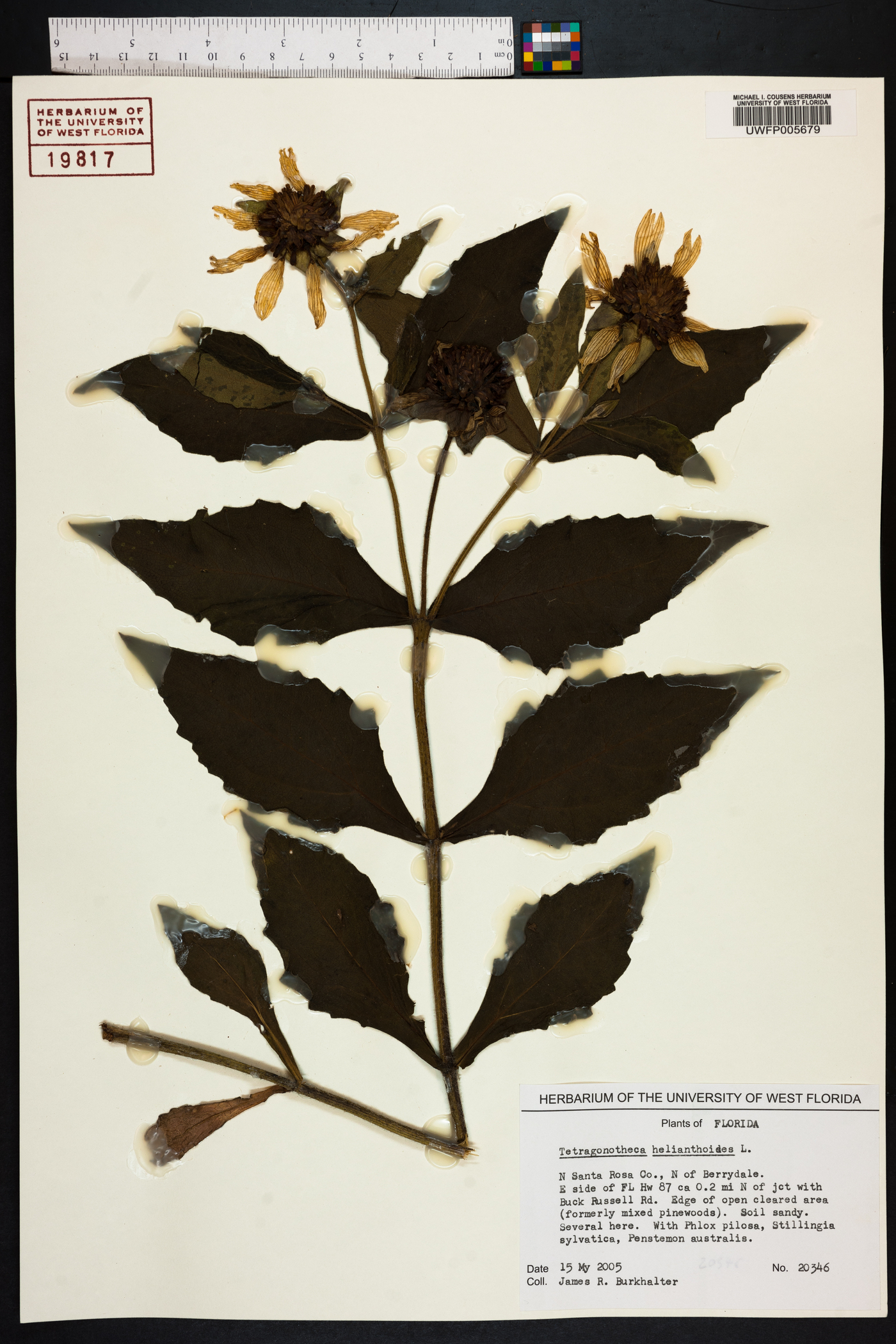Tetragonotheca
|
Family: Asteraceae |
Perennials, mostly 30-120 cm. Stems erect. Leaves basal and/or cauline; mostly opposite; petiolate, subpetiolate, or sessile (bases sometimes connate-perfoliate); blades lanceolate, ovate, rhombic, or rounded-deltate, sometimes pinnatifid, ultimate margins usually toothed, faces glabrate, sparsely hispidulous, or puberulent, gland-dotted. Heads radiate, borne singly or in loose, corymbiform arrays. Involucres obpyramidal to hemispheric, 12-25+ mm diam. Phyllaries persistent, 10-25+ in ± 2 series (outer 4 broadly lanceolate, foliaceous, the inner ovate to lanceolate, smaller, more scarious, each subtending a ray floret). Receptacles conic, paleate (paleae persistent, lanceolate to lance-ovate, flat or weakly conduplicate, apices acute). Ray florets 6-21+, pistillate, fertile; corollas yellow (often with reddish nerves). Disc florets 25-150+, bisexual, fertile; corollas yellow, tubes (basally dilated) much shorter than ampliate, cylindric throats, lobes 5, deltate. Cypselae ± ovoid or plumply 4- or 5-angled, finely 32-40-ribbed, sparsely strigose or glabrous; pappi 0, or of 1-10+ subulate to acerose scales (to 0.5 mm), or of 16-30, ± spatulate scales (0.5-2 mm). x = 17. Heads radiate, the rays pistillate and fertile, light yellow; invol of 4(5) relatively large and leafy bracts, united at base; receptacle conic, especially in fr, its bracts subtending rays as well as disk-fls, thin, partly clasping the achenes; disk-fls perfect and fertile, the cor-tube expanded at base and covering the top of the achene; style-branches flattened, with rather long, hairy appendage; achenes quadrangular or subterete, scarcely compressed; pappus of several short scales, or none; coarse, taprooted perennial herbs with clustered stems, opposite, ±toothed, often clasping lvs and few or solitary heads. 4, U.S., Mex. Gleason, Henry A. & Cronquist, Arthur J. 1991. Manual of vascular plants of northeastern United States and adjacent Canada. lxxv + 910 pp. ©The New York Botanical Garden. All rights reserved. Used by permission. |

